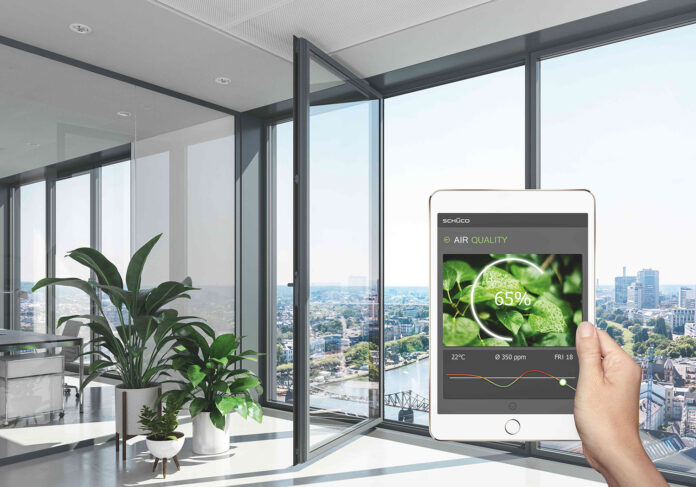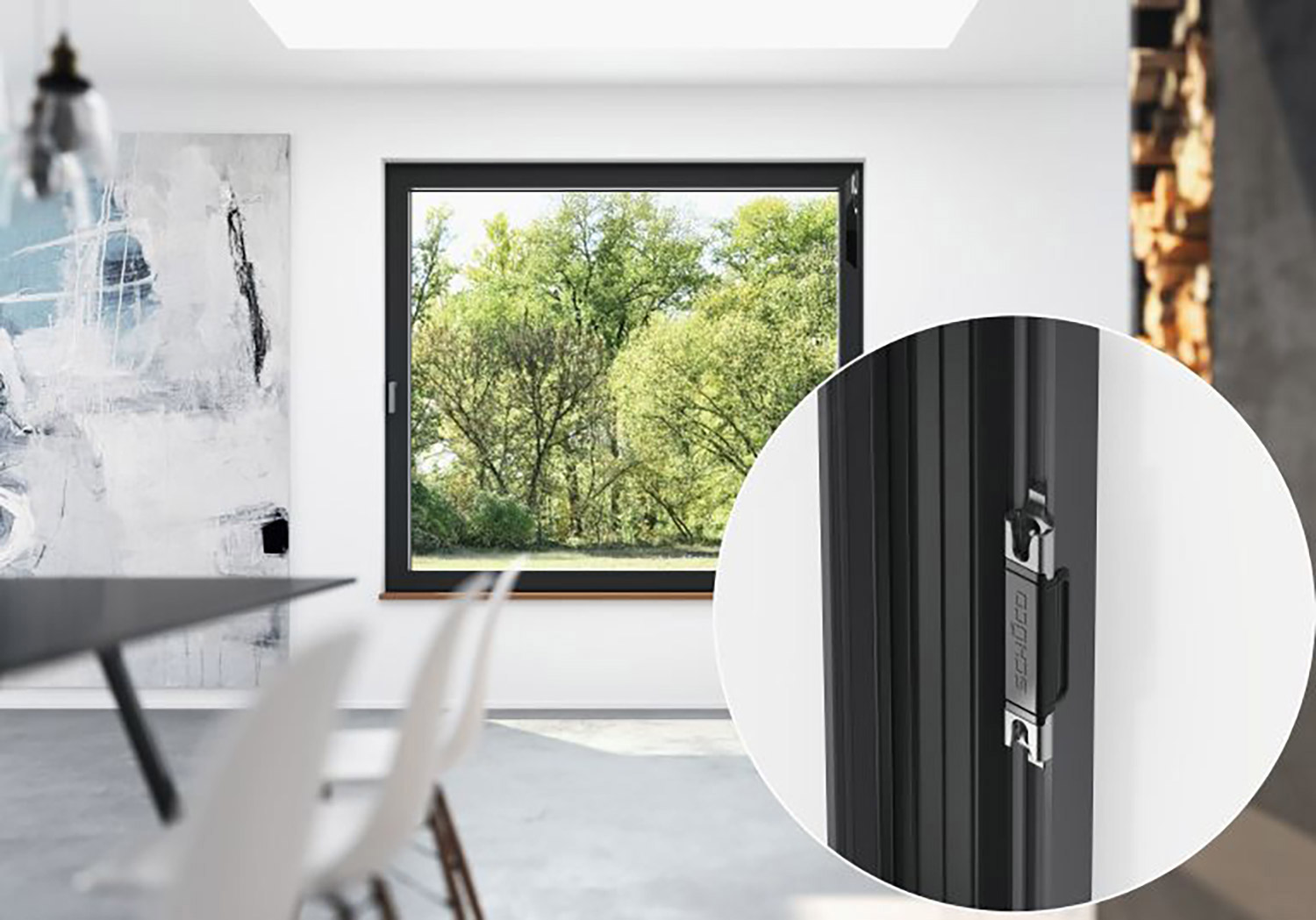Smart building technologies, including HVAC and energy management systems, are revolutionizing tenant experiences by offering personalized comfort and energy efficiency. Facade engineers and architects play a critical role in integrating these technologies into building designs, ensuring seamless connectivity, and optimizing the performance of smart facades. By incorporating smart systems and HVAC optimization, they help create adaptable, sustainable spaces that enhance both occupant satisfaction and operational efficiency for building owners.
IoT-Enabled HVAC optimization and Smart Facades:
A New Era in HVAC Data-driven Control
Modern facade engineering is increasingly integrating data analytics for HVAC optimization, ensuring both energy efficiency and occupant comfort. Facades play a crucial role in regulating indoor climate, influencing heat gain, ventilation, and overall building energy demand. By leveraging advanced data sources, HVAC systems can dynamically adjust to changing conditions, optimizing heating, cooling, and ventilation. This results in a substantial reduction of unnecessary energy consumption and indoor air quality improvement.
Facades equipped with responsive elements – such as recycled metal panels with integrated sensors – can support smart HVAC operations by reflecting or absorbing heat, optimizing shading, and facilitating natural ventilation.
Inside the building, advanced occupancy sensors – such as motion detectors or infrared sensors – provide crucial data for HVAC adjustments. These sensors help regulate airflow and temperature distribution by detecting room occupancy patterns, reducing strain on mechanical systems when spaces are unoccupied.
By continuously monitoring environmental variables and utilizing weather forecasts, predictive algorithms can anticipate temperature shifts, allowing smart facades to reduce reliance on mechanical cooling or heating.
Breaking Down Silos
Why Smart Facades Need Unified IoT Systems
The integration of IoT devices in commercial buildings has revolutionized how we monitor and optimize environmental conditions. However, to unlock their full potential, these devices must work together seamlessly, which is where a Building Operating System (BOS) comes into play.
The Challenge of IoT Data Harmonization
IoT devices are often designed to be “plug and play,” but their true power lies in cross-referencing data from multiple sources. When different devices operate in silos – due to varying communication protocols like MQTT, Matter, LoRaWAN, or Zigbee – building managers face inefficiencies and lost optimization opportunities. Without a unified system, data remains fragmented, and HVAC, lighting, and other building systems cannot fully leverage the insights provided by IoT sensors.
One approach to solving this issue is through custom integrations. However, these often result in costly, difficult-to-maintain “spaghetti code” solutions that become increasingly complex as more devices are added.
The Role of a Building Operating System (BOS)
A BOS acts as an intuitive central platform, integrating all IoT devices and smart building technologies into a single interface. Much like a smartphone operating system, a BOS unifies different functions – including HVAC, BMS, lighting, lifts, audio, and video – allowing for seamless automation and real-time control.
Benefits of a Unified BOS for HVAC optimization
Investing in a BOS provides significant advantages:
- Optimized HVAC Performance: Continuous monitoring and automation reduce energy consumption.
- Enhanced Occupant Comfort: Smart facades and environmental controls adjust to real-time occupancy and weather conditions.
- Lower Operational Costs: A single installation reduces complexity, streamlining maintenance and upgrades.
- Eco-Certifications: By improving energy efficiency, BOS-equipped buildings can achieve SmartScore certification, enhancing sustainability credentials.
- Future-Proofing: Extended compatibility with various IoT devices ensures adaptability as new technologies emerge.
A Seamless, No-Code Solution for Smart Buildings
A BOS eliminates the need for complex programming, offering a “no-code” interface that simplifies building management. Asset managers, owners, and tenants can interact securely with building technologies through an intuitive dashboard, making smart facades and HVAC optimization accessible without specialized expertise.
By integrating hardware, software, and data into a single agnostic system, a BOS transforms commercial buildings into intelligent ecosystems, ensuring efficiency, sustainability, and seamless user experience – ushering in a new era for IoT-enabled smart facades and HVAC control.
Smart Facades, Smart HVAC, Smart Savings
HVAC optimization and the Tenants Benefit
Today, a wide range of proptech applications are enhancing the smart building experience, especially for tenants, by offering personalized control over their environment. These tools help optimize energy and operational costs, benefiting both property owners and occupants.
Apps such as HqO, Sharry, Spaceflow, BrainBox AI, and Enersee integrate seamlessly with building systems, including HVAC, lighting, access control, and energy management. This empowers tenants to adjust their workspace to their preferences – whether it’s controlling room temperature via the HVAC system or managing energy use to ensure comfort while reducing costs.
The challenge for building owners lies in harmonizing the demands of diverse tenants, each preferring different apps for workspace management. A Building Operating System (BOS) solves this by unifying all smart technologies under one platform. This centralization allows owners to control everything from HVAC to lighting in real time, enhancing efficiency and reducing costs. Moreover, the BOS makes it easier to integrate new apps and technologies without sacrificing security or performance.
For tenants, the BOS provides a flexible, seamless experience, allowing them to interact with their preferred apps while enjoying an optimized, comfortable, and energy-efficient workspace. The result is a truly smart building tailored to the needs of both the owner and the tenant.
In conclusion, the integration of smart building technologies, including advanced HVAC optimization and energy management systems, significantly enhances the tenant experience while optimizing operational costs. Facade engineers and architects play a pivotal role in this transformation by designing facades that not only meet aesthetic and structural demands but also incorporate the latest innovations in energy efficiency, sustainability, and smart connectivity. By collaborating with proptech solutions, these professionals ensure that buildings are not only visually appealing but also environmentally responsive, creating sustainable, comfortable, and adaptable spaces for both tenants and owners.
Case Studies
Living Tomorrow Innovation Campus, Vilvorde, Belgium (2023)
Architects: Beliën
Engineering: Sweco
A Showcase of IoT in Facade Engineering
The evolution of smart buildings is redefining facades, transforming them into intelligent, responsive systems through the Internet of Facades (IoF). A prime example is Living Tomorrow Innovation Campus in Vilvoorde, Belgium, developed with Schüco’s expertise. This project demonstrates how embedding sensors into facade elements enhances building intelligence, sustainability, and maintenance. Schüco’s IoF technology integrates passive IoF.ID sensors and active IoF.Pulse systems, enabling real-time monitoring and predictive maintenance via a digital twin accessible from a smartphone. Beyond intelligence, each facade component has a unique digital identity, supporting life-cycle tracking and circular economy principles by minimizing CO₂ emissions.

As the Editor of FacadeToday.com, I merge my passion for Design, Architecture and Technologies with three decade of experience collaborating with entrepreneurs across many industries. My career has centered on fostering innovation, scaling business opportunities, and bridging gaps between technical experts, business developers, and creative visionaries. I thrive at the intersection of sustainable solutions, material advancements, and smart technologies, curating insights on themes like energy-efficient facades, smart tech, and advanced manufacturing. With a commitment to lifelong learning, I aim to empower architects and facade engineers by translating innovations into actionable knowledge, driving the industry forward through purposeful connectivity and cutting-edge practices.




